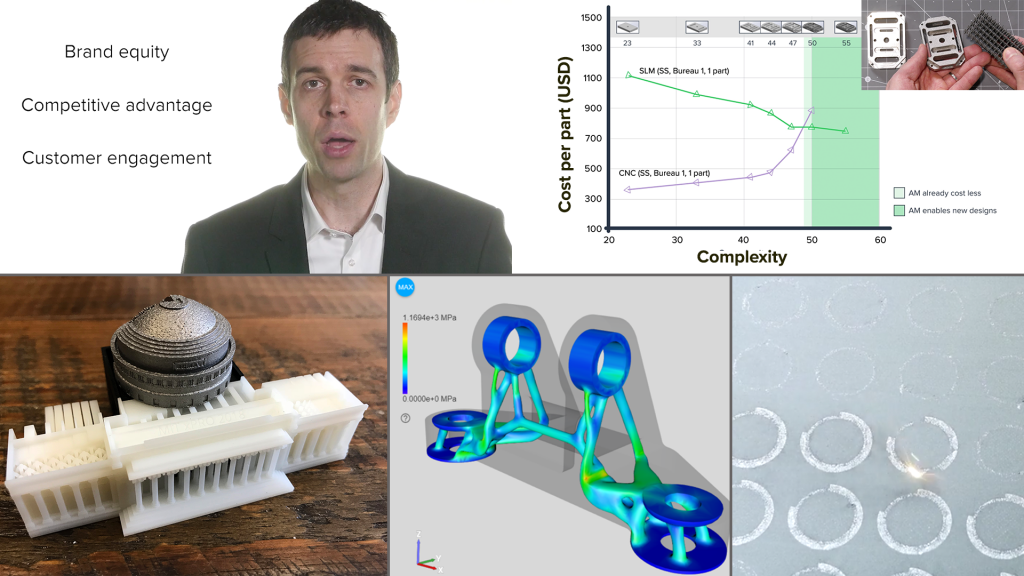
MIT has played a pivotal role in 3D printing for decades and has made seminal contributions to the advancement of machines, materials, and design tools. Recent work on 3D printed circuits and active materials, and startups such as Formlabs and Desktop Metal, have all emerged from MIT and/or from its esteemed alumni. Binder jetting, one of the earliest 3D printing technologies (and the origin for the term 3D printing itself), was invented at MIT in 1989 by Emanuel “Ely” Sachs and colleagues. Professor Sachs is one of over two-dozen experts featured in MIT’s online Additive Manufacturing for Innovative Design and Production course, which is led by Professor John Hart.
This 11-week course develops a comprehensive understanding of the technology principles, applications, and implications of additive manufacturing (AM). It explains the full spectrum of processes for AM of polymers, composites, and metals; and teaches how to differentiate among processes according to their capabilities and limitations. Moreover, the heart of the course focuses on design for AM, addressing engineering guidelines, computational design tools, and an innovative methodology that enables learners to apply AM to create breakthrough designs in their own industries. Design knowledge is complemented by a framework and model to evaluate the cost and performance of 3D printed parts. Taken together, this knowledge allows participants to identify and implement innovative uses of AM across the product lifecycle, and craft a vision of how AM will serve as a cornerstone of the future digital factory.
If you’re wondering what the course content looks like, you can see interviews with experts and video of lectures here.
The course content is tailored for professionals–from engineers and executives–seeking a technically-rich and operationally valuable understanding of AM. Complementing the technical content, the course presents a library of applications, spanning industries, and spanning stages of the product lifecycle. These are structured to stitch together key technical principles and emphasize the value propositions of AM, in aerospace, automotive, medical, consumer products, and other disciplines.
In the course, Professor Hart challenges the learners to “rethink” how AM can enable new product designs and new levels of performance. For instance, AM’s ability to vary effective density via a lattice structure can be used to optimize a part’s strength versus weight. Unlike most means of conventional manufacturing, a lighter part is actually less expensive to make via AM than a heavier part. Further, AM can enable consolidation of assemblies into fewer parts–turning complexity into simplicity–and not only enhancing product performance, but also reducing engineering effort and simplifying supply chains. These new value dimensions enabled by AM are driving its industrialization as it enters the mainstream of advanced production.
Enroll for MIT’s Additive Manufacturing for Innovative Design and Production here.